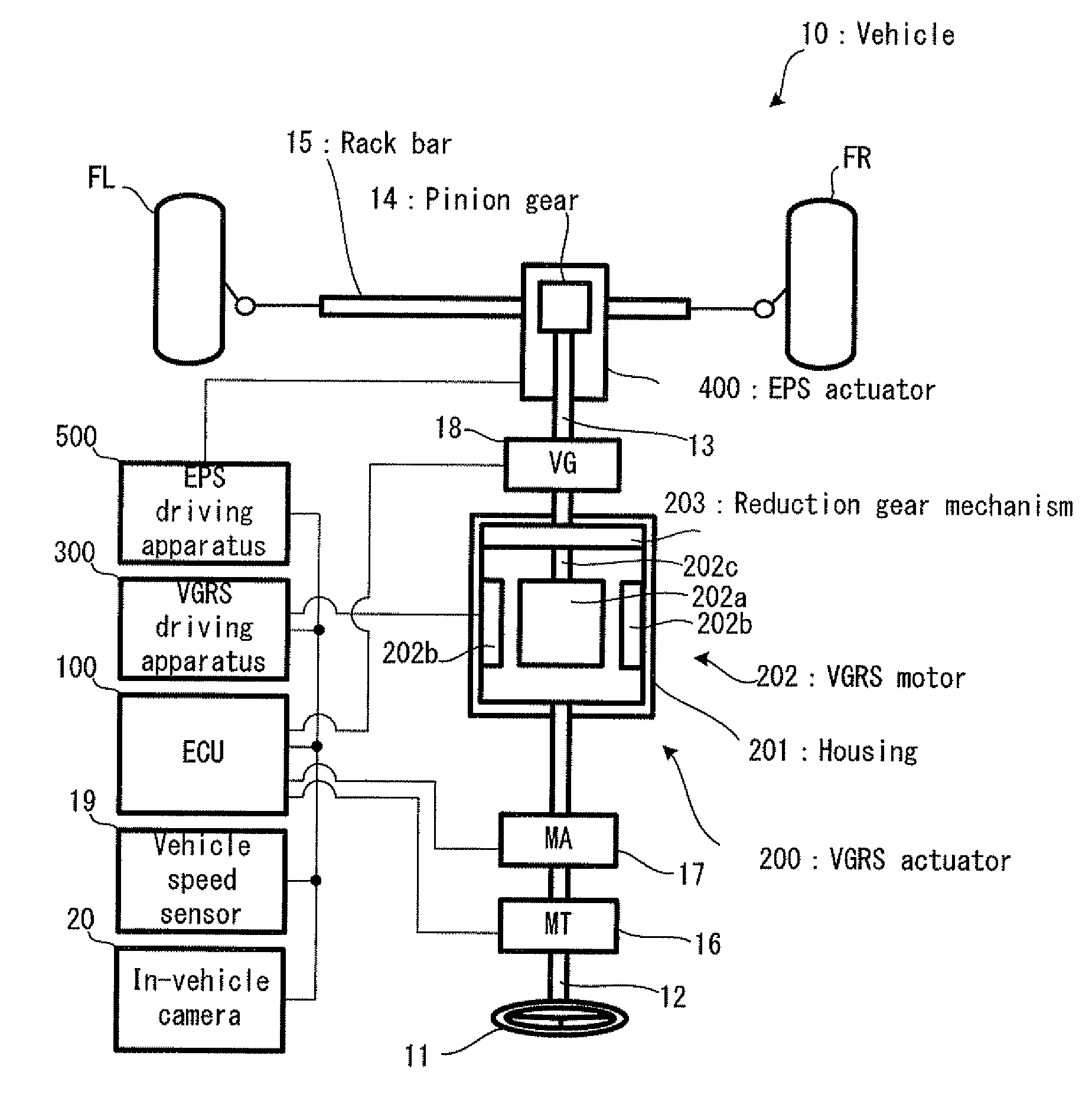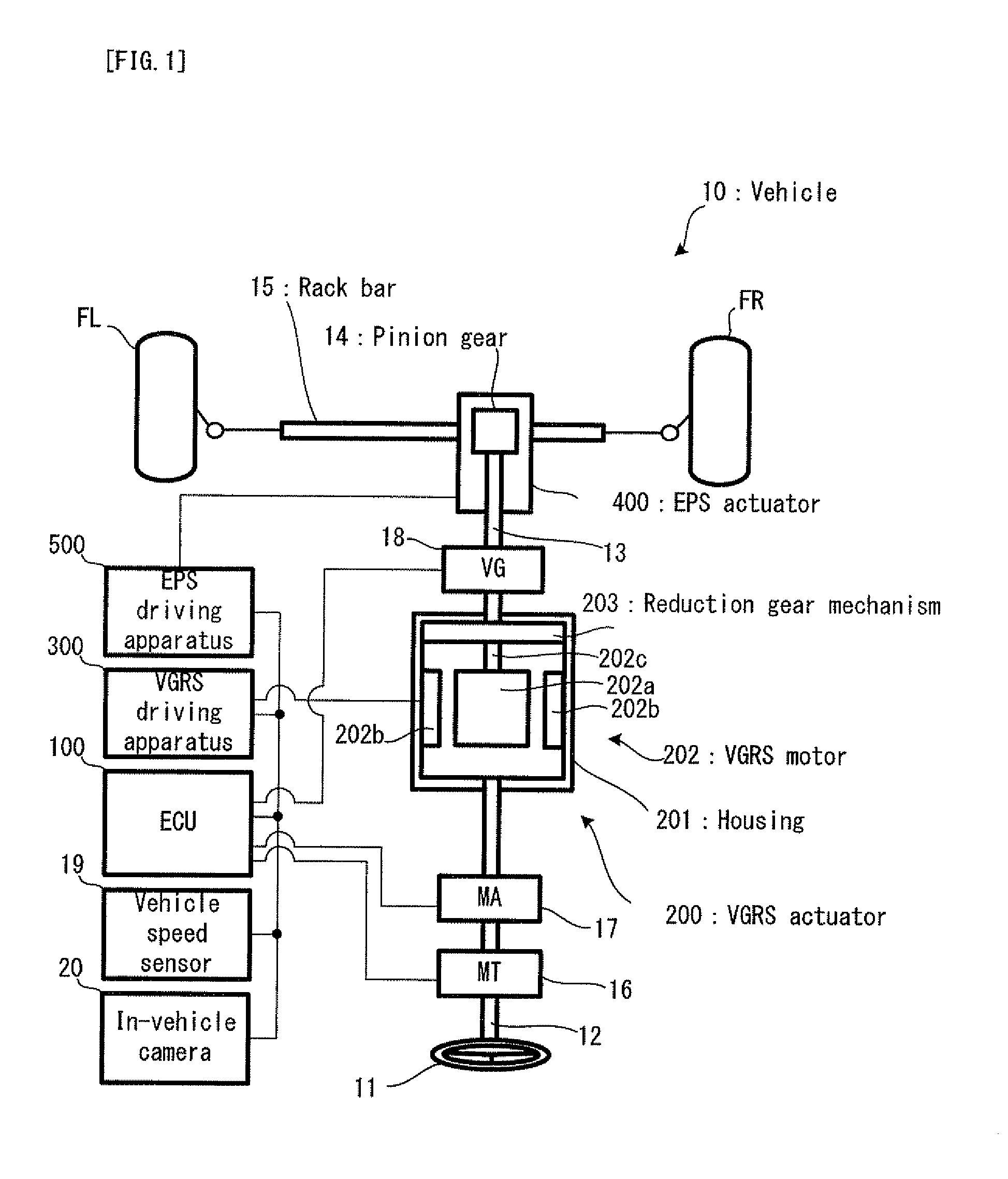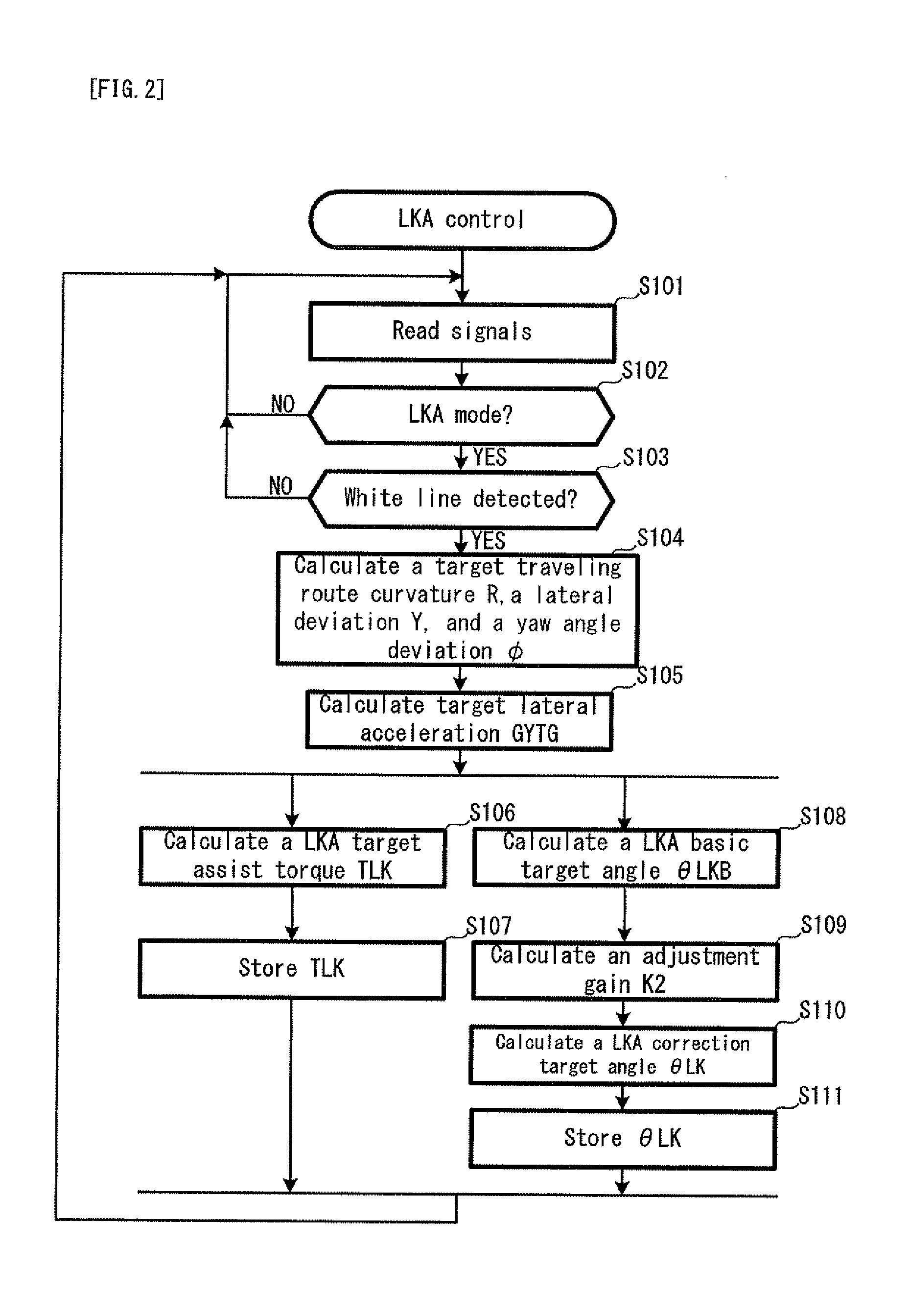Driving support apparatus of vehicle
a technology of driving support and vehicle, which is applied in the direction of steering initiation, vessel construction, instruments, etc., can solve the problems of difficult to realize the following target route by using a single steering mechanism, difficult to avoid the growth of uncomfortable feeling, and high probability of driving discomfort, so as to reduce the amount of steering angle reduction, stabilize the vehicle behavior, and increase the curvature of the target driving route
- Summary
- Abstract
- Description
- Claims
- Application Information
AI Technical Summary
Benefits of technology
Problems solved by technology
Method used
Image
Examples
first embodiment
[0090]Firstly, with reference to FIG. 1, the structure of a vehicle 10 in a first embodiment of the present invention will be explained. FIG. 1 is a schematic configuration diagram conceptually showing the structure of the vehicle 10.
[0091]In FIG. 1, the vehicle 10 is provided with a pair of front wheels FL and FR on either sides as steered wheels, and it is constructed to move in a desired direction by steering the front wheels. The vehicle 10 is provided with an ECU 100, a VGRS actuator 200, a VGRS driving apparatus 300, an EPS actuator 400 and an EPS driving apparatus 500.
[0092]The ECU 100 is provided with a CPU (Central Processing Unit), a ROM (Read Only Memory) and a RAM (Random Access Memory), each of which is not illustrated, and it is an electronic control unit capable of controlling all the operations of the vehicle 10. The ECU 100 is one example of the “driving support apparatus of the vehicle” of the present invention. The ECU 100 is constructed to perform each of LKA con...
second embodiment
[0146]Next, as a second embodiment of the present invention, an explanation will be given on LKA control different from that in the first embodiment. Firstly, with reference to FIG. 9, the details of the LKA control in the embodiment will be explained. FIG. 9 is a flowchart showing the LKA control in the second embodiment. Incidentally, in FIG. 9, the overlap points with FIG. 2 will carry the same reference numerals, and the explanation thereof will be omitted as occasion demands. Moreover, the structure of the vehicle in the second embodiment is assumed to be the same as that of the vehicle 10 in the first embodiment.
[0147]In FIG. 9, if calculating the target lateral acceleration GYTG (the step S105), the ECU 100 calculates a LKA front wheel target rudder angle θLKA_FR on the basis of the calculated target lateral acceleration GYTG (step S401). If calculating the LKA front wheel target rudder angle θLKA_FR, the ECU 100 stores the calculated LKA front wheel target rudder angle θLKA_...
third embodiment
[0168]Next, a third embodiment of the present invention will be explained. Firstly, with reference to FIG. 16, the structure of a vehicle 30 in the embodiment will be explained. FIG. 16 is a schematic configuration diagram conceptually showing the basic structure of the vehicle 30. Incidentally, in FIG. 16, the overlap points with FIG. 1 will carry the same reference numerals, and the explanation thereof will be omitted as occasion demands.
[0169]In FIG. 16, the vehicle 30 is different from the vehicle 10 in the first and second embodiment in that the vehicle 30 does not have the VGRS actuator 200 for varying a relation between the steering angle MA of the steering wheel 11 and the rudder angle of the front wheels and its associated equipment, but instead, the vehicle 30 is provided with an ARS 600 for allowing the steering of rear wheels RL and RR. In other words, in the embodiment, the rear wheels function as the “steered wheels” of the present invention. However, the front wheels ...
PUM
 Login to View More
Login to View More Abstract
Description
Claims
Application Information
 Login to View More
Login to View More - R&D
- Intellectual Property
- Life Sciences
- Materials
- Tech Scout
- Unparalleled Data Quality
- Higher Quality Content
- 60% Fewer Hallucinations
Browse by: Latest US Patents, China's latest patents, Technical Efficacy Thesaurus, Application Domain, Technology Topic, Popular Technical Reports.
© 2025 PatSnap. All rights reserved.Legal|Privacy policy|Modern Slavery Act Transparency Statement|Sitemap|About US| Contact US: help@patsnap.com



